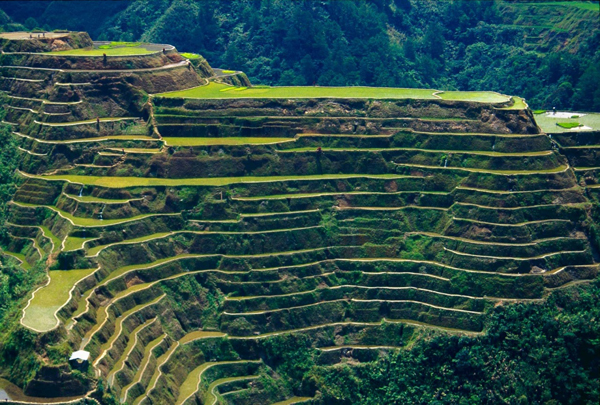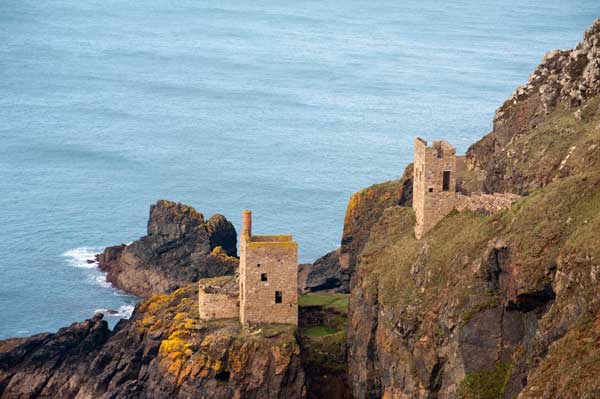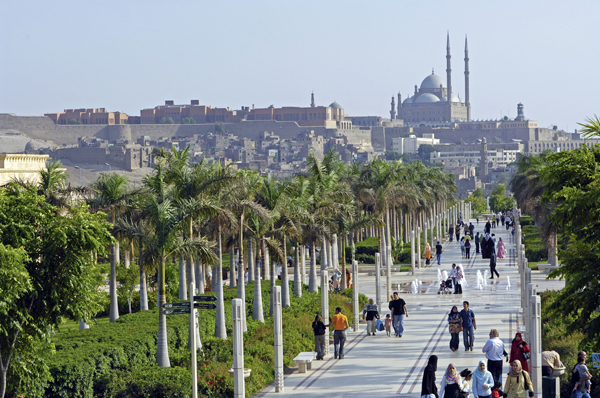News
Interview with Franceso Bandarin, Director, UNESCO World Heritage
 Image credit: UNESCO
Image credit: UNESCOA recent UNESCO report on cultural landscapes says, “As soon as a territory is seen as a landscape, it bears cultural values; but these values are not necessarily outstanding and universal. Those landscapes where the interaction between people and their environment is considered to be of an outstanding universal value are World Heritage Cultural Landscapes." Please describe the process for becoming a cultural landscape. There are only 63 listed in the world, less than 10 percent of the total World Heritage sites.
There is a World Heritage list, which encompasses different categories of heritage. One of the categories is cultural landscapes, which was created in 1994. This type of heritage category identifies a special relationship between man and nature and the product of this relationship, especially when it attains what we call a standing universal value. A site's value is measured on a comparative basis with similar types of heritage in other parts of the world. A cultural landscape is then reviewed by professionals and, finally, by the World Heritage Committee to determine if it's a universal example.
Sites are always proposed by a Member State of the World Heritage Convention. The World Heritage Convention is an international treaty, and today has 186 member states. A state has the right, once it has ratified the World Heritage Convention, to submit a proposal for inscription in the World Heritage list, and UNESCO and other institutions then evaluate and assess whether the site merits inscription.
Cultural landscapes in danger include the Bamiyan archeological site in Afghanistan, the Fort and Shalimar Gardens in Pakistan, and the archeological landscape around Bam in Iran. Which puts most of these sites more into danger: natural events (earthquakes, flood, erosion) or human causes (looting, urban development, or intentional destruction)?
In the case of Bam, it clearly was the major quake that struck the place in 2003. And, of course, this landscape, which is of high archeological value, is still very, very important to World Heritage. So, quakes and floodings and all these natural disasters are a major threat. But, obviously, some other designed landscapes or landscapes that find themselves in proximity of urban areas are threatened by urbanization and encroachment.
This is the case of Shalimar, which today is almost difficult to recognize from what it was in the past, when it was an isolated example of built landscape in the middle of nature. Now, it’s the middle of a shantytown, so it’s in a very spoiled environment.
In other cases, I would say that one of the threats difficult to counteract is socioeconomic change. For instance, we have a very important case in the Philippines, the famous Rice Terraces, which are the product of millennia of activity of man. The rice fields are built into hill systems for terraces, rice growing. Migration and changes in the economy of the area have resulted in damage and reduced maintenance. So the causes are different.
 Rice Terraces of the Philippine Cordilleras / Explore Wonders
Rice Terraces of the Philippine Cordilleras / Explore Wonders
Certainly, it’s very difficult to preserve an evolving landscape. We live in a transitional world and have to adapt to our own constants. Sometimes it’s very difficult to imagine that something will remain exactly the same. We had to define heritage categories that are intrinsically evolving. We’re trying at UNESCO to change our approach a little bit to create a vision of how heritage can be seen in a transitional world.
Landscapes have been protected since 748 A.D., when Tang emperor Xuan Zhong issued a decree banning fishing and cutting down trees in the Nine Bend River area. Man-made landscapes, including elaborate gardens, have been designed and built for centuries. Is cultural landscape preservation really a new concept?
It is in the modern sense of a heritage category included in the framework of an international treaty, but clearly landscapes have always existed. Often, they were essentially reserved for the elite or ruling class. We've had man-made landscapes probably since the world existed, but they were essentially in the private domain.
Now we’re talking about something that is completely universal, entirely in the public domain. Cultural landscapes are conceived as a collective good, something that belongs in the sphere of democracy, choice, even rights sometimes.
The beautiful gardens of the Chinese emperors were essentially limited to a very restricted elite. It was for their pleasure and entertainment. So, it’s not something that we can compare. The social dimension of landscapes today is quite different from the past.
Natural landscapes are becoming tourist attractions in many parts of the world-- Mongolia’s steppes, rainforest preserves, archeological sites are all embedded with culture heritage. How can countries balance access, which is needed to preserve cultural connections with landscapes, with preservation of working ecosystems?
What we are saying is that these two goals are pretty much convergent. Preserving landscapes is about defining an approach to sustainability. Defining a sustainability approach implies revising how we use technology, how urban life is lived, how we understand the future and nature.
We should try to learn from the past and use both existing and traditional technologies so we can better sustain our modern life. I think the challenge of sustainability is really to learn from the past which things can be adapted to modern life and projected into the future. I think we have a lot to learn from traditional landscaping techniques and the way in which landscapes were created. We can examine the landscape stratigraphy, the layering process throughout the centuries.
Interestingly, UNESCO's cultural landscapes program recognizes mining landscapes as cultural landscapes, including the Cornwall and West Devon Mining Landscape in the U.K. Many environmentalists would show concern at lauding these sites as examples of world heritage, given they often represent a less-than-sustainable involvement with the land. Why include these?
In the World Heritage convention, we have determined there are different categories of landscapes. Some of them are landscapes that we see in daily life. Some of them are archeological landscapes, something that comes to us from the past and don’t have a function in modern life. But cultural landscapes must cover all the ways in which man and nature interact.
I think that these kinds of landscapes should encompass different types and forms of human life in the past. Even mining landscapes have to be included as part of the human experience. Clearly, we don’t consider these as examples to propose for the future, but they certainly are testimonies of history.
 Cornwall and West Devon Mining Landscape, U.K.
Cornwall and West Devon Mining Landscape, U.K.
This is really the heart of the challenge. What we aren't trying to do is freeze a landscape. We are completely aware that although our task is linked to conservation, the world evolves and the vision of heritage changes. It's very important that we include in our vision, practice, and statutory work, a concept that allows for the interpretation of modern needs, and the values that are involved in cultural landscapes. These values are something that can be preserved, but within an evolving society.
I think this is the challenge: preserving values in a changing environment. It’s not an easy task, but this is exactly the meaning of the vision that we are trying to promote at UNESCO.
Many landscape architects are working on rehabilitating brown fields in urban areas, creating new, sustainable landscapes out of degraded, used lands. This involves incorporating new cultural values related to sustainability into the landscape. One example is the upcoming Freshkills Park in New York City, which has gone from a massive landfill to a park and ecological preserve. Do you see these types of projects being recognized as cultural landscapes in the future?
I think they will. Essentially, these sites are a revisitation of our industrial history. We have a number of examples in Europe, especially in Germany, which, in fact, was at the forefront of this type of approach. The transformation of these industrial landscapes or wastelands into new parks is something that has really changed the lives and profiles of entire regions. If you go today to the Ruhr region, which used to be a center of the coal mining industry, you'll find a huge redesign effort has resulted in a new landscape. I cannot excluded these from consideration in the future because they really represent an important achievement of contemporary society.
I was recently in Cairo, where I visited the extremely important project that was done by the Aga Khan Trust for Culture. It’s called Al-Azhar Park (see a short BBC video on the park). The Al-Azhar Park was a wasteland right in the middle of the city. It was a garbage dump. They turned this huge garbage dump into a new park, which has become a core for Cairo's redevelopment and modernization, but also enabled a conservation approach to the historic Cairo area. It's not only a specific intervention for a degraded site, but also a motor for regeneration and urban revitalization.
 Al-Azhar Park, Cairo / e-perpustaakan
Al-Azhar Park, Cairo / e-perpustaakan
Franceso Bandarin is the Director of the UNESCO World Heritage program. Learn more about UNESCO's work preserving cultural landscapes.
Interview conducted by Jared Green.